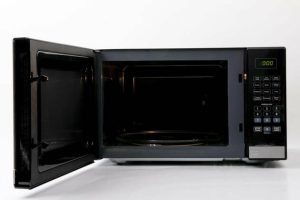RF rotary joints, essential components in microwave systems, play a pivotal role in ensuring seamless signal transmission between stationary and rotating parts. Their unique design and operational capabilities make them indispensable in various applications, including radar systems, satellite communications, and medical equipment. This article delves into the intricacies of RF rotary joints, shedding light on their design, functionality, and the critical factors influencing their performance and selection.
Understanding RF Rotary Joints
RF rotary joints facilitate the transfer of high-frequency signals through a rotating interface without compromising signal integrity. These devices consist of precision-engineered components that maintain a continuous electrical path between the input and output, regardless of the relative motion.
Key Features
- Broadband Frequency Range: RF rotary joints are designed to operate across a wide range of frequencies, typically from a few MHz to over 40 GHz, catering to diverse application requirements.
- Low Insertion Loss: They exhibit low insertion loss, ensuring minimal signal attenuation during transmission, which is crucial for maintaining system performance.
- High Power Handling: Capable of handling power levels from a few watts to several kilowatts, depending on the design and materials used.
- Durability and Longevity: Constructed with high-quality materials, RF rotary joints are built to withstand harsh environments and mechanical stress, offering extended service life.
Design Considerations
When designing or selecting an RF rotary joint, several factors come into play to ensure optimal performance and compatibility with the application.
Frequency Range and Power Handling
The operational frequency range and power handling capabilities are paramount. Selecting a joint that matches the system’s frequency and power requirements is essential to avoid signal distortion or damage to the device.
Size and Specifications
The physical dimensions and specifications of the rotary joint must fit within the system's architecture. Compact designs are often preferred for space-constrained applications, while larger systems may accommodate more substantial units with higher power capacities.
Material Quality and Construction
The choice of materials impacts the joint's performance, especially in terms of insertion loss, power handling, and durability. High-quality materials such as silver-plated brass or copper alloys are commonly used for their excellent electrical conductivity and resistance to corrosion.
Cost and Budget Considerations
Cost is a critical factor in the selection process. The price of anRF rotary joint can vary widely based on its specifications, materials, and design complexity. Balancing performance requirements with budget constraints is crucial for cost-effective system design.

Applications of RF Rotary Joints
RF rotary joints find applications in numerous fields, each with its unique requirements.
- Radar Systems: In radar applications, rotary joints are used to transmit signals between the stationary part of the radar and the rotating antenna, ensuring accurate and reliable operation.
- Satellite Communications: They enable the rotation of satellite dishes or antennas while maintaining a stable communication link with orbiting satellites.
- Medical Equipment: Rotary joints are used in medical imaging systems, such as MRI machines, to facilitate the rotation of the gantry without interrupting signal transmission.
Conclusion
RF rotary joints are critical components that ensure the reliable transmission of high-frequency signals in rotating systems. Their design and selection require careful consideration of factors such as frequency range, power handling, size, material quality, and cost. By understanding these aspects, engineers can effectively integrate RF rotary joints into microwave systems, enhancing performance and reliability across a wide range of applications.
For more information on RF rotary joints and their specifications, visit Dolph Microwave.
